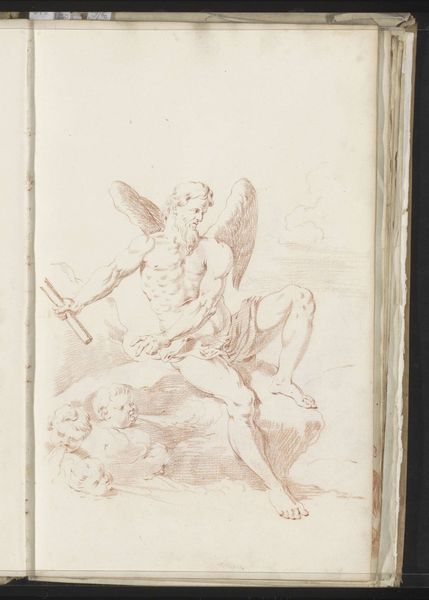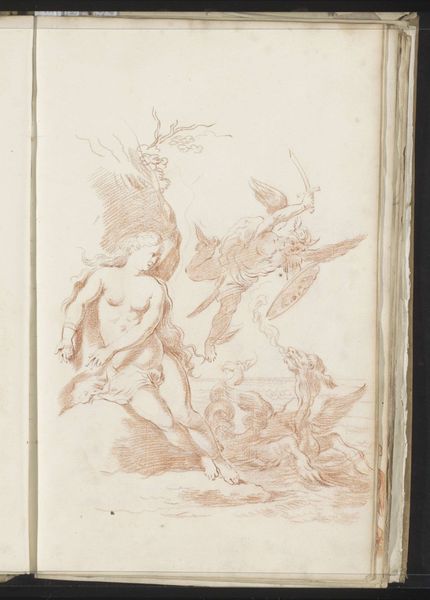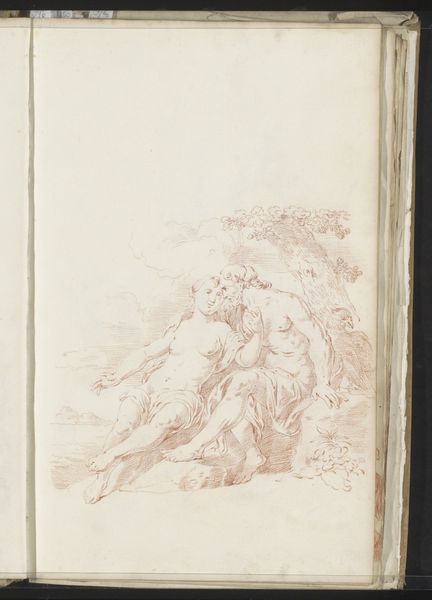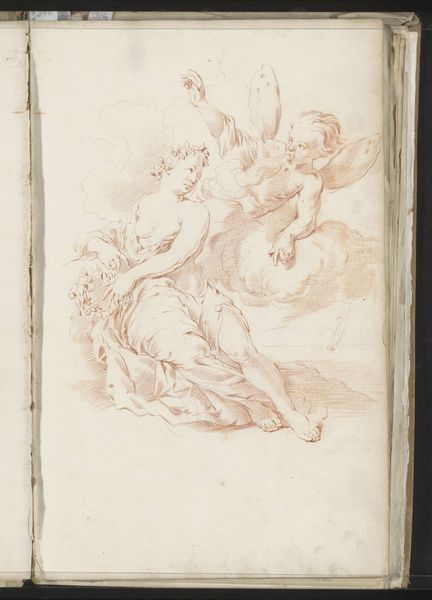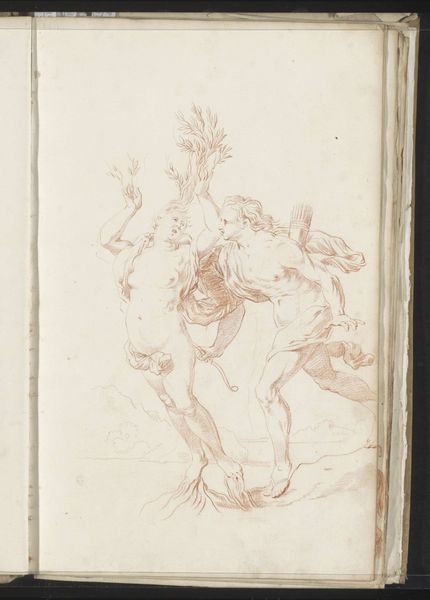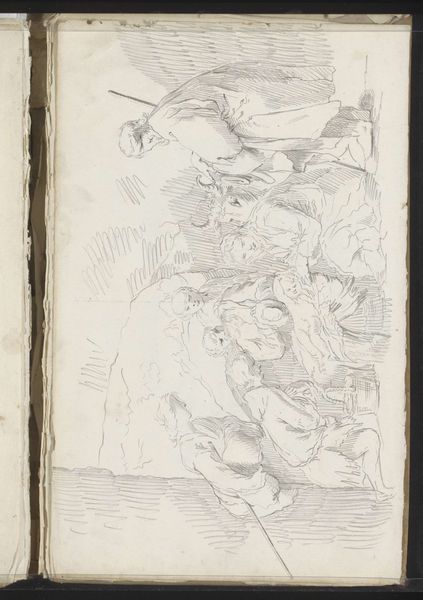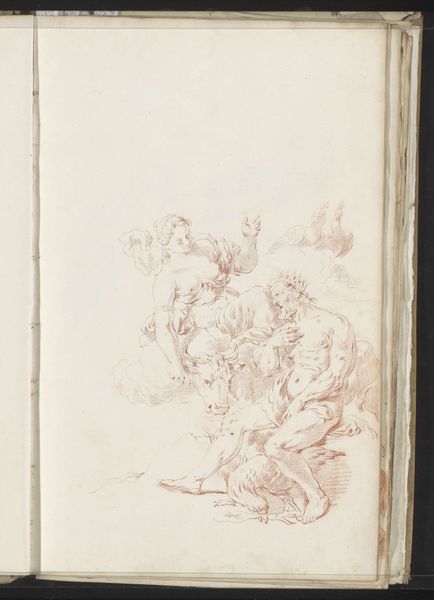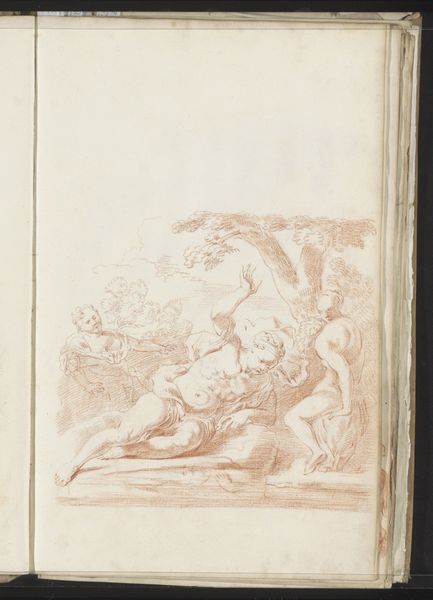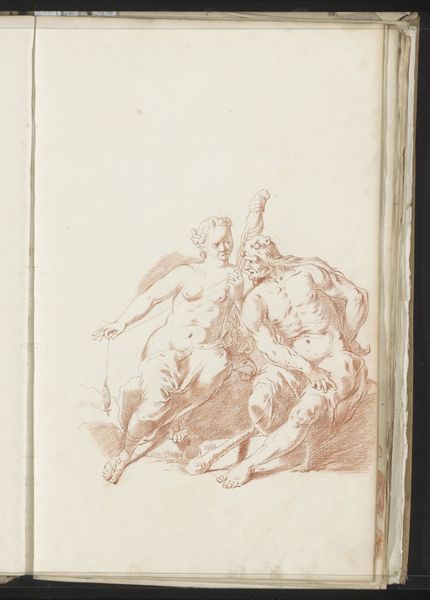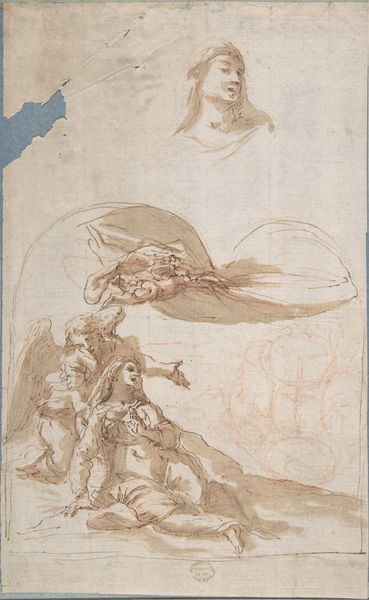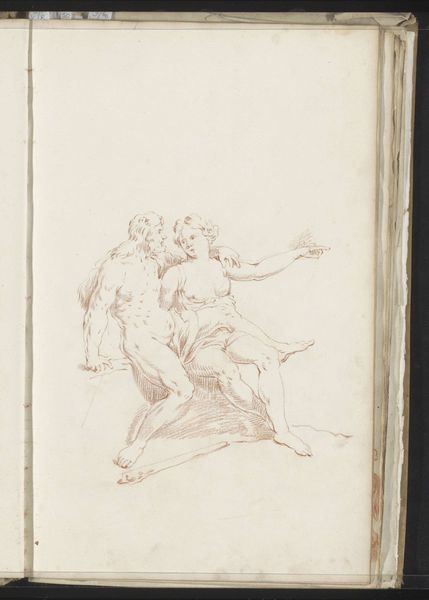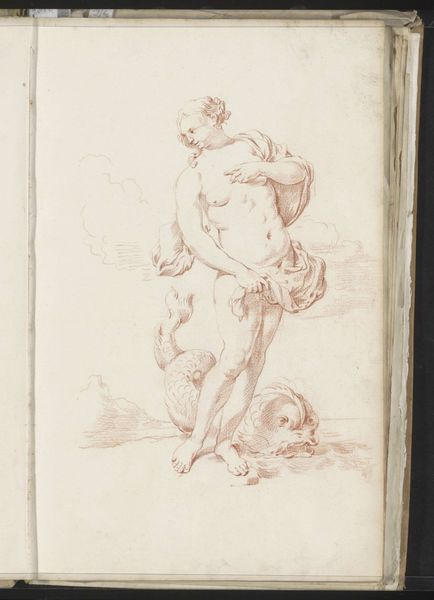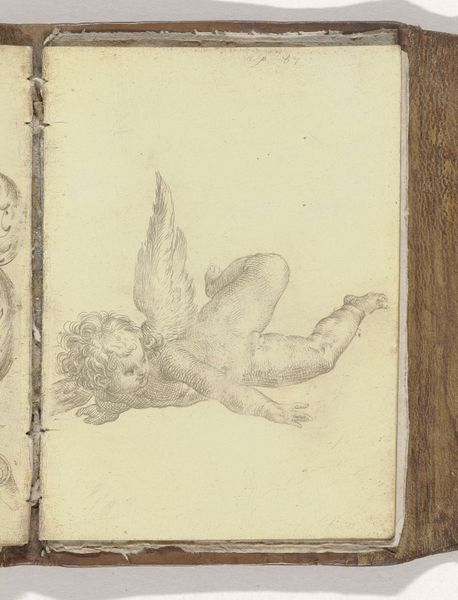
drawing, paper, ink
#
drawing
#
narrative-art
#
baroque
#
landscape
#
figuration
#
paper
#
ink
Copyright: Rijks Museum: Open Domain
Curator: The fall of Icarus is rendered here, circa 1701, by Jacob Toorenvliet, in ink on paper. A narrative scene conveyed in strokes of delicate precision. What catches your eye? Editor: The overwhelming sense of…space. Or, perhaps, emptiness? The tower and distant shore emphasize Icarus's isolation, mid-fall. Curator: The linear perspective certainly enhances the drama, directing our gaze downwards, mirroring the tragic trajectory. What is the meaning in his face? Editor: It’s an interesting take on the myth, in my view. The drawing isn’t interested in a highly polished, idealized Icarus, nor does it focus on horror or torment. The loose use of line implies instability, emphasizing fragility against a dominant, oppressive sky. Curator: An insightful interpretation, seeing how Toorenvliet worked during the Baroque period. Consider the interplay of light and shadow; see how they delineate the figures, adding depth. Does that help in assessing the emotion conveyed? Editor: It hints at it, certainly. I wonder, though, how much of the emotive potential is being filtered through the lens of, perhaps, upper-class patronage. Does that status shape its message? The lack of extreme agony could stem from artistic restraint to conform to social sensibilities of the era, rather than raw personal expression. Curator: It is always interesting how that may inflect emotion. Editor: True. So in thinking about how cultural and social structures intersect with artistic intentions: does the fact that it's on paper and drawn in ink provide it greater reach? How did images and narratives get circulated at the time, and who had access to them? I wonder about the original function of the image. Curator: These are valuable considerations in comprehending the broader cultural context of this historical composition. By examining the relationship between aesthetics, technique and dissemination we uncover potential pathways of influence in Dutch society at the turn of the 18th century. Editor: Precisely, it offers a glimpse not just into art-making, but the broader socio-cultural milieu. Curator: Reflecting upon this small yet powerful scene, we recognize that there can be tragedy and power in simplicity. Editor: Yes. Despite the sparse elements of a landscape on paper, we have together located how historical interpretation shapes a work like Toorenvliet's “The Fall of Icarus”.
Comments
No comments
Be the first to comment and join the conversation on the ultimate creative platform.
